This is a preprint.
Interlocked transcription factor feedback loops maintain and restore touch sensation
- PMID: 40475441
- PMCID: PMC12139737
- DOI: 10.1101/2025.05.15.654349
Interlocked transcription factor feedback loops maintain and restore touch sensation
Abstract
The sense of touch relies on the continuous function of specialized mechanosensory circuits, but the underlying molecular mechanisms remain poorly understood. Here, we report that the conserved transcription factors (TFs) CFI-1 (ARID3) and EGL-5 (HOXA7) jointly maintain in adult C. elegans the molecular identity of two key interneuron types, securing information processing within a mechanosensory circuit. Toggling between normal and low levels of CFI-1 or EGL-5 in adults generated digital-like (ON/OFF) effects both on touch-evoked escape response and interneuron identity. Strikingly, reintroduction of CFI-1 following its prolonged depletion restored escape response defects. Mechanistically, we identified two network motifs, a double-positive CFI-1/EGL-5 feedback loop and positive CFI-1 autoregulation, which together "lock-in" the interneuron identity programs. We propose that these interlocked motifs not only maintain robust escape responses throughout life, but are also essential for the restorability of adult-onset touch defects. Altogether, this work illuminates the molecular principles that maintain adult neuron identity and circuit function, and offers biomedically relevant insights into the restorability of neuronal and behavioral defects caused by mutations or variation in TF-encoding genes.
Conflict of interest statement
DECLARATION OF INTERESTS The authors declare no competing interests.
Figures

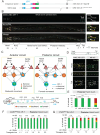
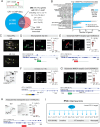

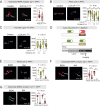
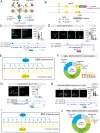

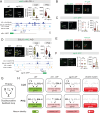
Similar articles
-
CFI-1 functions unilaterally to restrict gap junction formation in C. elegans.Development. 2025 Jan 1;152(1):dev202955. doi: 10.1242/dev.202955. Epub 2025 Jan 7. Development. 2025. PMID: 39679967 Free PMC article.
-
The Caenorhabditis elegans spalt-like gene sem-4 restricts touch cell fate by repressing the selector Hox gene egl-5 and the effector gene mec-3.Development. 2003 Aug;130(16):3831-40. doi: 10.1242/dev.00398. Development. 2003. PMID: 12835398
-
The transcriptional corepressor CTBP-1 acts with the SOX family transcription factor EGL-13 to maintain AIA interneuron cell identity in Caenorhabditis elegans.Elife. 2022 Feb 4;11:e74557. doi: 10.7554/eLife.74557. Elife. 2022. PMID: 35119366 Free PMC article.
-
The touchy business of gastrointestinal (GI) mechanosensitivity.Brain Res. 2018 Aug 15;1693(Pt B):197-200. doi: 10.1016/j.brainres.2018.02.039. Brain Res. 2018. PMID: 29903622 Free PMC article. Review.
-
Touch sensation in Caenorhabditis elegans.Bioessays. 1996 Mar;18(3):199-206. doi: 10.1002/bies.950180307. Bioessays. 1996. PMID: 8867734 Review.
References
Publication types
Grants and funding
LinkOut - more resources
Full Text Sources
Miscellaneous
